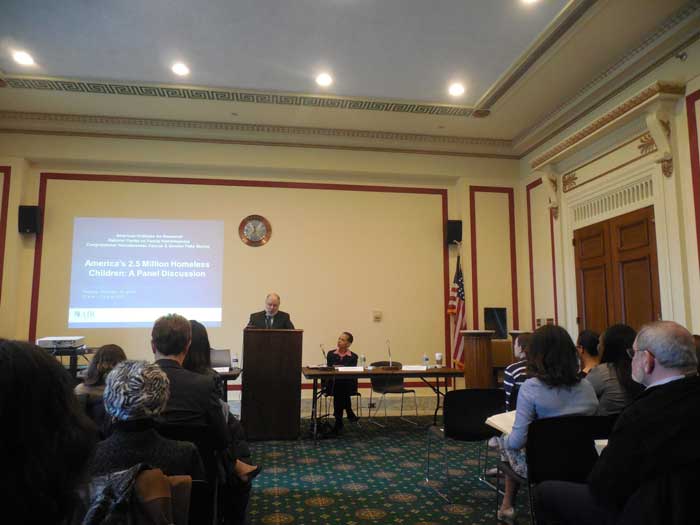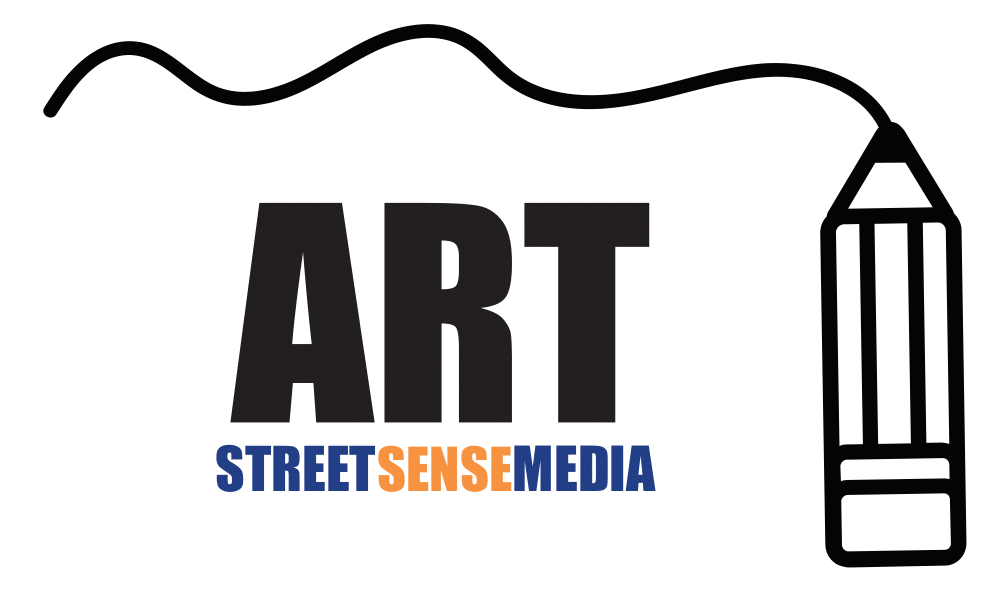On Tuesday February 10 a panel briefed Congress on the “historic high” of 2.5 million homeless children in the United States. The panel was put together by the American Institutes for Research (AIR)’s National Center on Family Homelessness (NCFH), to present its 2014 report “America’s Youngest Outcasts.”
America’s Youngest Outcasts analyzed data from the Department of Education (DoE), using DoE’s definition of homelessness. Homeless children counted by DoE include only children that are in the school system; these are children from the ages of six to eighteen.
John McGah, senior associate of the AIR/NCFH, pointed out that DoE’s statistics look at less than half of the total 2.5 million homeless children in the United States.
“A number of studies have shown that 51 percent of homeless children–and this is confirmed in more than one research paper–are between the ages of zero to six,” McGah said.
America’s Youngest Outcasts reports an eight percent nationwide increase in child homelessness from 2012-2013. In D.C. alone there were 6,506 homeless children from 2012-2013 despite the existence of “extensive” strategies for ending homelessness, according to the report.
When Christie Jones, a school counselor in Stafford, VA, became aware of the many homeless children in her area, she searched for a tool to teach kids about homelessness in a way they would understand, but found nothing. Jones decided to write her own book on the struggles of a fictional young school-aged boy who lives in a shelter.

“I had several students in mind, and I was looking for a resource to support them. We had an influx of homeless students,” Jones said in an interview with Street Sense. “I wanted to see if I could find something that was telling their story so that they would know that they’re not the only ones who are living in that situation.”
Max, a main character, is a compilation of students that Jones has worked with over the years.
In “Are We Home Yet?” Max is forced to live in a shelter with his family after his father lost his job. He enjoys the stability he finds in school: his teachers, his friends and a designated place to keep his belongings. Max depicts the lives of the 1.2 million homeless children who attend public schools in the United States.
It is important to teach children about the diversity of the various home lives of people in our communities–including those who live in a shelter, according to Jones. She hopes that “because they are so innocent and have so much compassion,” children will come to understand homelessness and have empathy for their classmates that may be living the realities of it.

Jones also stressed the importance of educating school officials on the number of homeless students in their area.
“I don’t think there are many who are aware of the many definitions of homelessness as it applies to the McKinney-Vento Homeless Assistance Act,” said Jones. “It starts with education and awareness.”
The McKinney-Vento Act was passed in 1987 and has been labeled by the National Coalition for the Homeless as the first and only major federal legislative response to homelessness. Title VII of the Act provides for several education and training programs to benefit children and adults.
“Homeless liaisons at schools often confront limitations due to low funding of the McKinney-Vento program,” Denise Ross, Homeless Liaison at Prince George’s County School District, said at Tuesday’s briefing.
Only 22 percent of school districts in the country receive McKinney-Vento Act funds, according to Ross. She believes school district homeless liaisons are essential for effective implementation of these funds.
“The McKinney Vento Act’s education provisions should be strengthened, and its funding should be increased,” Ross said. “In addition, HUD homeless policy should be amended to include families who live in hotels, or who are forced to stay with other people.”
Last February The United States Interagency Council on Homelessness (USICH), established by Mckinney-Vento, released a new 4-part system to target family homelessness called Family Connections. The strategies under this system include assessing families’ needs to better tailor the aid they receive, connecting them to that aid and developing evidence-based practices for serving homeless families and those who are at risk of becoming homeless.
AIR/NCFH suggested targeting child and family homelessness by ensuring education, housing, and employment opportunities for the likeliest demographic to head homeless households: single mothers. America’s Youngest Outcasts suggested providing services that would help single mothers with childcare and transportation, in addition to supplemental income for single mothers who work part time and/or at minimum wage rates
Mark Greenberg also addressed the work that the Administration for Children and Families (ACF) has been doing alongside USICH and HUD to prevent child homelessness. Greenberg, acting assistant secretary of the ACF for the U.S. Department of Health and Human Services, discussed the ACF’s guides for shelter and housing providers to better assess their clients.
America’s Youngest Outcasts also indicates a need for a better overall assessment of homeless families or those that are at risk. This sort of assessment would not only inquire on the size and income of the family unit but also inquire about each individual member’s exposure to trauma, health issues, as well as each child’s developmental needs.
“When I talk with people about the effects of homelessness on children, I don’t think that people are really paying attention to the life-long effects,” said Jones. “They have this bowl of emotions all mixed up inside of them, and they don’t really know what to do. Their parents don’t know what to do.”
Jones also mentioned the high levels of stress and trauma that children may have experienced.
“The impact of homelessness in children—especially young children—may lead to changes in brain architecture that interferes with learning, emotional well-being, cognitive skills, and the ability to form positive relationships,” McGah said.








